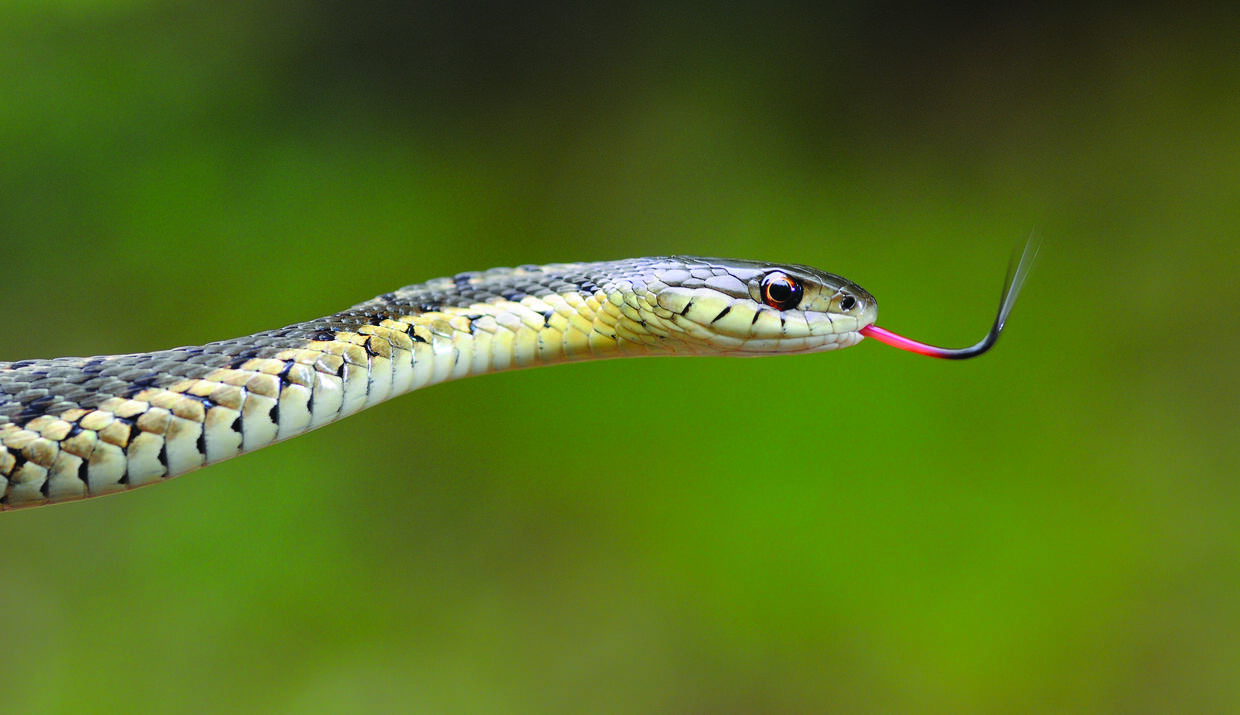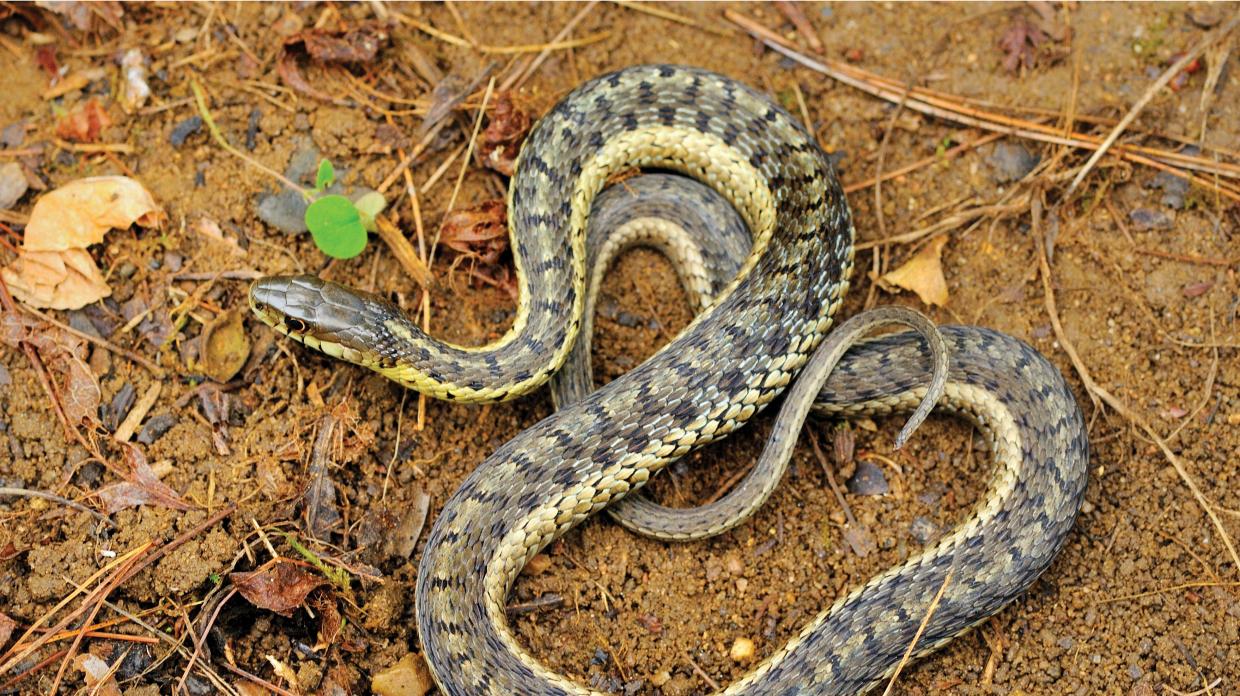Fast facts
Common name: Common gartersnake
Scientific name: Thamnophis sirtalis
Range in MA: Statewide
Conservation status: Common, not listed
Fun fact: The name "garter" snake comes from the once-popular article of clothing (a narrow band of fabric used to keep up stockings).
Similar-looking species: Eastern ribbonsnake
Identification tip: Gartersnakes lack the burgundy stripe and white eye spot that distinguish the much rarer eastern ribbonsnake.
Description
Gartersnakes are active during the day and are highly variable in appearance. Their most common pattern is three yellow, olive, or yellowish-green stripes separated by two black or brown stripes. The two lower yellowish stripes are more broad than the center stripe and extend down to to the belly or are separated from it by an often indistinct, sometimes dotted, dark line. Bellies are yellow or pale green. Black stripes on either side of the back are composed of two rows of alternating black spots, resulting in a checkered pattern that is sometimes expanded across the back, replacing the central yellow stripe.
Some coastal and island populations lack stripes altogether and instead display thin, dark bars across the back, or are plain sandy-brown overall with a diffuse pattern of black spots. Adults range in length from 18–40+ inches.
Habitat
Gartersnakes live in virtually every terrestrial and wetland habitat in the state. They are most abundant in and around damp habitats.
Life history
Gartersnakes mate in spring and fall. Smaller males often pursue larger females. Litters of 1–5 dozen young, 5–9 inches long, are born in July and August. Diets vary widely and can include worms, insects, frogs, toads, fish, salamanders, nestling birds, and small mammals. Alarmed garters can flatten their heads and bodies to increase the contrast of their body patterns and make their heads look more broad and menacing.

